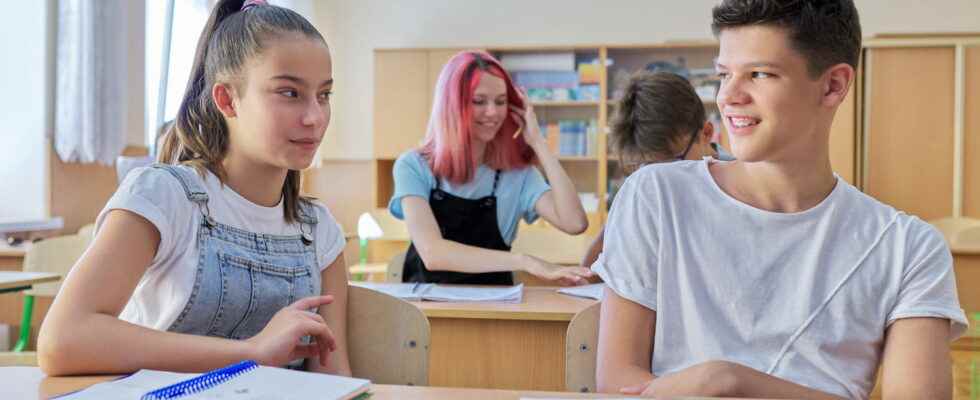Some students with disabilities can be accommodated within the Ulis, adapted devices. They then benefit from individualized teaching, as close as possible to their needs.
The acronym Ulis stands for “Localized Units for School Inclusion”. It is not about classes, but about devices for the education of students with disabilities in the first and second degree. We thus find ULIS-school (12 students maximum), ULIS-college (10 students maximum), ULIS-high school (10 students maximum). “Pupils oriented in Ulis are those who, in addition to the educational adjustments and adaptations and the compensation measures implemented by the educational teams, require a teaching adapted within the framework of groupings.”, specifies the Ministry of National Education. According to the latest figures for the 2020-2021 school year, 53,100 students with disabilities attend a ULIS in the first degree (nursery and primary), an increase of 23 % in ten years.
Which students are educated in Ulis?
The children who attend les Ulis all have different profiles, but have in common to be with a disability. According to figures from the Ministry of National Education, girls are a very large minority in the workforce of ULIS. The objective of the device is not to bring together pupils who present the same disabilities and to strive for the creation of a homogeneous group, but rather to seek a compatibility of learning needs and objectives in order to create a real pedagogical dynamic.
Up to what age can the Ulis device be integrated?
- The ULIS-School system is open to children aged 6 to 12
- the device ULIS-college for children aged 11 to 16.
The lessons are adapted to the needs and abilities of the students, the latter cannot be educated within a traditional class. However, they are attached to an ordinary class, an inclusion class, in which they can follow certain lessons at a pace close to that of other children. The aim is to enable them to develop both academic and social skills with other students of the same age. They are therefore fully integrated into the life of the school and take part in the activities organized for all the pupils within the framework of the school project.
What are the disabilities concerned for ULIS classes?
Students enrolled in ULIS can present:
- TFCs (cognitive or mental function disorders),
- TSLA (specific language and learning disabilities)
- PDD (pervasive developmental disorders includingautism),
- TFM (Motor Function Disorders),
- TFA (hearing function disorders),
- VFD (disorders of visual function)
- TMA, multiple associated disorders (multi-disability or disabling disease).
What is the program within the Ulis?
There is no defined program within the ULIS. The goal is to implement each student’s PPS. Learning is therefore individualized according to the needs of the children. The class is coordinated by a specialized teacher holding the CAPA-SH or 2CA-SH (professional aptitude certificate for specialized aids). “He is part of the educational team of the school and organizes the work of students with disabilities for which he is responsible according to the indications of the personalized schooling projects, in conjunction with the referent teacher and with the teachers. school, college or high school classes.“, specifies the Ministry of National Education.
What is the difference between Ulis and Segpa?
A Segpa class (Adapted General and Vocational Education Section) is a class that welcomes teenagers from the 6th class to the 3rd class with significant and persistent academic difficulties. This class is integrated into a college and accommodates a maximum of 16 students in order to allow individualized follow-up. But unlike students in ULIS, Segpa students follow the same programs as their classmates, even if adjustments are necessary. General lessons are provided by school, college or high school teachers. The students also carry out internships in companies and the objective is that they can present themselves at the end of college for the national patent diploma.
What orientation after Ulis college?
Like their comrades who follow a general education, the students of Les Ulis take part in the future course. A device that aims to support middle school students in their orientation, to help them build their training project and to allow them to discover the professions that are accessible to them. These students can pass the college certificate or the general training certificate (CFG), and of course do internships in companies. At the end of the third, several paths are available to them: move towards a Segpa, continue within the Ulis system within a vocational high school, a medico-social establishment or a CFA (training center for apprentices). They can also leave specialized education and join a vocational high school in order, for example, to prepare a CAP.
